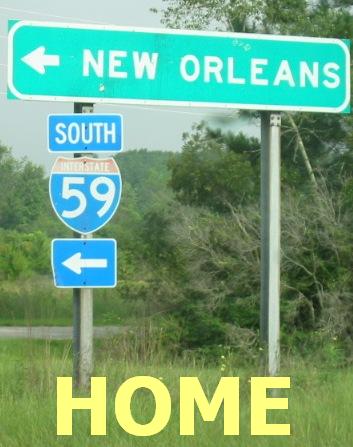Amendment 5
On September 30, 2006, Louisiana voters voted to pass
Act 851 as Amendment 5 of the Louisiana Constitution. The amendment reads thus:
“To prohibit the expropriation of property by the state or a political subdivision of the state for predominant use by or transfer to a private person or entity under certain circumstances; to define "public purposes" relative to the expropriation of property; to provide exceptions for the operation of public ports and airports and for the expropriation of property for industrial development purposes; and to provide for items included in just compensation to be paid to the owner of the expropriated property.” (
Constitutional Amendments, 3)
1.
In other words, the power of eminent domain within Louisiana has been severely reduced. Placed into context, this amendment shows a backlash against the Supreme Court’s
Kelo et al. v. City of New London et al. decision in 2005, which declared some use of eminent domain for seizure of private property and redevelopment constitutional (
Nolon, 1)
2. The decision allows for exceptions if sanctioned by the state constitution, and Louisiana has become the first state to amend its constitution to limit eminent domain after the
Kelo decision.
Opponents of the
Kelo decision have strongly favored this amendment, claiming that it saves small businesses and farms from “eminent domain abuse”, whereby the government will take their land to give to developers (
Kramer and Knepper, 1)
3. The amendment does allow eminent domain for public use under certain circumstances, but those are limited to the following:
(1) a general public right to a definite use of the property; (2) continuous public ownership of property dedicated to one or more of the following objectives and uses, (a) public buildings in which publicly funded services are administered, rendered, or provided, (b) roads, bridges, waterways, access to public waters and lands, and other public transportation, access, and navigational systems available to the general public, (c) drainage, flood control, levees, coastal and navigational protection and reclamation for the benefit of the public generally, (d) parks, convention centers, museums, historical buildings and recreational facilities generally open to the public, (e) public utilities for the benefit of the public generally, (f) public ports and public airports to facilitate the transport of goods or persons in domestic or international commerce; (3) the removal of a threat to public health or safety caused by the existing use or disuse of the property. (
Initiatives, 1)
4
Consequently, the big concern on everyone’s mind is the implications of this amendment for the New Orleans recovery effort. Obviously, without the ability to obtain land at will, the government will face major obstacles in redesigning New Orleans to fit a new model. Also, the costs of rebuilding will rise, as taxpayers will have to pay for homes in scattered but unpopulated neighborhoods. Most importantly, without eminent domain, the government will have a tough time attracting businesses to reinvest in New Orleans (
Moran, 2)
5.
On the plus side, the amendment still provides for seizure of land for public purposes, such as construction of roads of levees, so much can be done. In the end, our concern with this matter lies in its limiting what we can do in the field of economic revitalization.

